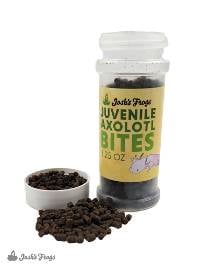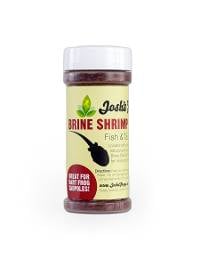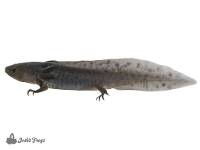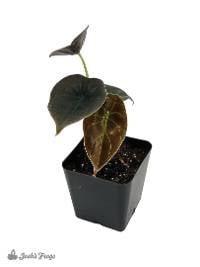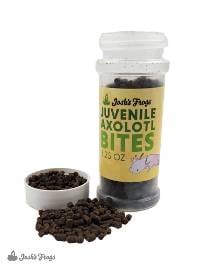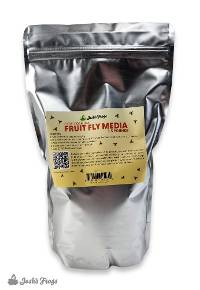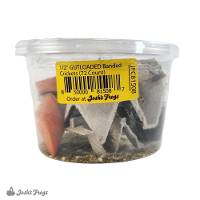Josh's Frogs
2.5-3.5" Leucistic Axolotl - Ambystoma mexicanum (CBP)
2.5-3.5" Leucistic Axolotl - Ambystoma mexicanum (CBP)
$44.99 0.0 out of 5 stars
(0)
0.0 out of 5 stars
(0)About This Product
Please note it is illegal for us to ship Axolotls into California, Maine, and New Jersey.
Orders placed for axolotls from these states will be cancelled and refunded.
Defining Characteristics:
- Bold
- Aquatic
- Easy to keep
- Prefers cooler temperatures
- Can regenerate damaged limbs/tissue
Name: Most commonly known as the axolotl, although sometimes called the water dragon or Mexican Walking Fish. The name axolotl is of Aztec origin. It is thought that the Aztecs named the creature after one of their gods (Xolotl), although it is also loosely translated to mean “water servant”, “water sprite”, or “water monstrosity”. The axolotl’s scientific name is Ambystoma mexicanum. Axolotls are one of a few neotenic salamanders in existence, which means they retain their juvenile features throughout life. Unlike their close relatives the tiger salamanders (and other mole salamanders), axolotls never lose their gills or leave the water as adults.
Certified Breeder Program: These axolotls were procured via our Certified Breeder Program. This certification process will allow us to bring a wider variety of healthy, captive bred animals to you, our customers. We stand behind these animals just like any animals bred at our facility. Besides the fact we’ll be offering more animals, what do you need to know about Josh’s Frogs Certified Breeder Partnership? You need to know these animals are from people with the same approach to animal keeping and breeding as us here at Josh's Frogs, are disease free, and most importantly captive bred! To learn more, please read our blog on the Josh's Frogs Certified Breeder Program.
Recommended Aquarium Size & Setup: Juvenile axolotls can be started out in an aquarium as small as 10 gallons, but they should be bumped up to at least a 20 gallon as they age. We do not recommend more than two axolotls per 20 gallons. Three or four can be kept in an aquarium of 40 gallons or larger. That being said, they do not require being kept in groups and do just fine alone.
If gravel is utilized, it should be too large for the axolotls to swallow. Sand makes a better substrate and is generally easier to clean, but bare bottom is acceptable as well. Caves or hides will help make your axolotl feel secure. Make sure to provide adequate, gentle filtration.
Temperature (°F): Axolotls require cool temperatures to thrive. 55-65 degrees is ideal. You want to try and keep water temperatures around 70 or lower - higher temps can become lethal. Chillers can be used to achieve this, or try keeping axolotls in a cool part of the house year round.
pH/Hardness: Axolotls are not super fussy about their pH and can thrive anywhere from 6.5-8.0. However, keeping it in the 7.0-8.0 range is considered ideal. Moderate general hardness is appreciated.
Size: At the time of sale, captive bred red axolotls from Josh’s Frogs will measure at least 2.5 inches long and be about 3-4 months old. They can be fairly quick growers, with adults reaching up to about 14 inches within a couple years. The cooler they are kept, the slower axolotls will grow.
Age: Axolotls have an average captive lifespan of about 10-15 years with proper care. Axolotls sold by Josh's Frogs are about 3-4 months old.
Feeding: At the time of sale, captive bred axolotls will devour thawed bloodworms, live blackworms, white worms, or small axolotl pellets.
As they age, axolotls can handle larger and larger food items, including full-size nightcrawlers, large axolotl pellets, and frozen fare such as krill. They can also be fed treats such as waxworms and live ghost shrimp on occasion.
Sexing: Axolotls are easy to sex when mature. Males have a more streamlined, slender body, while females tend to be larger and more rotund. A male's cloacal region will also appear very swollen. Most axolotls can be reliably sexed when they are about 8 inches long, which typically takes 8-10 months.
Color/Pattern: Leucistic axolotls have a whitish-pink body color, with black eyes and pink gills.
Breeding: When you have fully mature animals, breeding axolotls is fairly straightforward. The bigger issue is not overbreeding them and having a plan to raise the offspring, as they can have very large broods. It is recommended to house males and females separately because of this. It is best to wait until your axolotls are at least 18 months of age to attempt breeding.
Typically a breeding tank should feature pieces of slate and clumps of plants (fake or live). It is thought that cooling the water slightly or decreasing the daylight and then increasing gradually can trigger spawning. However, it can also be fairly random. The male will use the slate or other flat surfaces to lay his spermatophores, which he will then urge the female to swim over. Fertilization is internal, meaning for a breeding to be successful a female must take up the spermatophores with her cloaca. Then anywhere from a few hours to a day or so later, she will begin laying her eggs. There can be between 100-1000, depending on the size, condition and age of the female. She will often lay her eggs amongst the clumps of plants. When she is done laying eggs, it is best to remove the male and female and keep them separate to recuperate. Eggs will hatch in 2-3 weeks. In order to raise them successfully, you will need lots of live food and ample space to keep them. We recommend hatching baby brine shrimp and culturing microworms to feed them initially.
Natural Range: In the wild, axolotls are critically endangered. Though they used to exist in two different lakes in Mexico, one was drained, narrowing their range further. Today, wild axolotls only exist in Lake Xochimilco and are at risk of extinction due to invasive species and pollution.
History in the Hobby: Although critically endangered in the wild, axolotls became revered in research due to their regenerative abilities. Because of this, they have been bred widely in captivity and are now quite popular as pets. They are available in several morphs, from albino to copper, leucistic, melanistic, and GFP.
Links of Interest:
- Josh's Frogs Axolotl Care Sheet
- Axolotls on Wikipedia
- Axolotl.org - more Axolotl care facts than you can shake a stick at!
- Axolotl Care Sheet by John Clare, published in Reptiles Magazine
Shipping
After placing an order containing a live animal, you will receive a scheduling email containing our JotForm scheduling link to schedule your new pet's delivery date.
With this scheduling link, you will be able to schedule your order's delivery up to 30 days in advance. You will be able to choose a date of delivery for Tuesday-Saturday (Saturday arrival depends on the carrier's service availability) with the estimated time of arrival generally being 12pm, or 4:30pm for more rural areas. Overnight lows must be above 40°F to ship directly to you (or above 30°F for FedEx Ship Center pickups) as well as below 90°F by estimated time of arrival.
If you require further assistance, or prefer to talk to one of our Customer Service agents, please feel free to reach out to our [email protected] email or our phone line 1-800-691-8178.
Other Customers Also Bought
Customer Reviews
0.0 out of 5 stars
Review data
5 star reviews
- 0%
4 star reviews
- 0%
3 star reviews
- 0%
2 star reviews
- 0%
1 star reviews
- 0%

